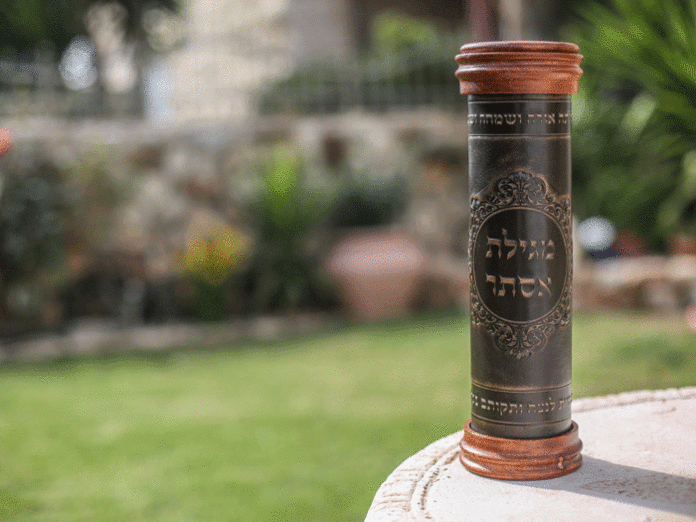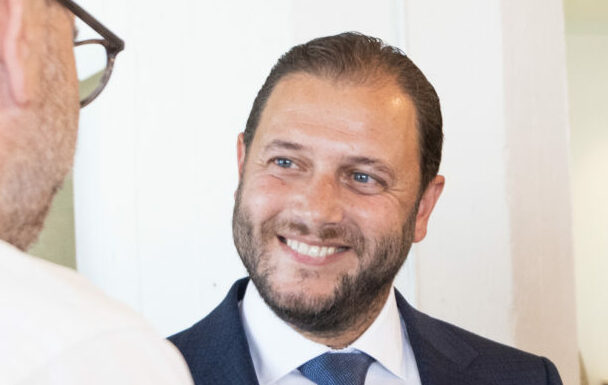Purim 1986. Brooklyn, New York. My chasan, Nachman, asked me to help him check his new megillah. He leined from the megillah, and I followed in a Chumash. Every word was perfect.
I was 18. Nachman was 22. Our life story together lay open before us like a blank parchment with only the title written in.
For our first date, Nachman borrowed the shadchan’s car. One of his friends, who had some dating experience, had recommended the lobby of a hotel near the airport and scribbled the directions for him. Nachman was talking to me while navigating—pre-GPS. We got lost on that first night. We also found our way into our future.
Ten days later, Nachman asked me to marry him and I said “yes.” I had no way of knowing what I was saying “yes” to.
Ah! The happy dizzy early years; we had three children under the age of three. At our son Yossi’s upsheren, we also had an 18-month-old and a newborn. I smiled and accepted mazel tovs as we cut Yossi’s red-gold curls, but I was desperate for sleep. I was sure I’d be tired for the rest of my life.
One memory of that time still makes me uneasy. When Yossi was four, and we were expecting our fourth child, I couldn’t sleep because I was thrilled about having another baby, but I was also scared. One night, I woke Nachman to ask him, “How am I going to manage teaching and being a good mother to the other kids and taking care of the baby?”
I never got to take care of the baby. He was born too weak to cry, too weak to breathe, too weak to be brought home from the hospital. The doctors couldn’t tell us why. He died when he was three and a half months old, two weeks before Purim. That was the first time I saw Nachman cry.
There’s saying yes, and there’s living yes. I call it “yes, even though.” Even though my baby had just passed away, Purim was coming. Even though I wanted to be left alone to cry and cry, I got my kids into costumes, and I let them eat too much candy. Yossi asked to get dressed up “like a tatty.” That was the first year I made what my kids—who are adults now—still call “the pink Purim drink,” a frothy blend of frozen strawberries with whip, which—and this is the best part—I served at the beginning of the Purim seudah, not for dessert, because of v’nahapoch hu. That Purim was the start of my “yes, even though.”
We had another baby. She, too, was too sick to come home. More doctors. More tests. That’s when we found out that Nachman and I share a rare mutation that puts every one of our babies at risk of dying from a mitochondrial disorder; the enzyme that produces energy is missing. We were given odds: 75 percent chance for a healthy child and 25 percent chance for a sick child.
I learned, years ago, that a neshamah sees what will happen to it in this world and agrees to it; we say “Yes” before we start our journey, and we know what we’re saying “Yes” to. Then we forget, which is a good thing. By the time the lines of our story are written, we’re already all in.
Nachman and I had eight children. Four of them died as babies.
Energy. Motion. I dragged myself through the sadness of those years. I took care of my healthy children. I taught. I held my babies in the NICU. I sobbed into my pillow late at night. My babies, without energy, seemed more spiritual than physical, more in the next world than in this one. I was the one who was lump and matter: a body doing what a reluctant body must. Because “yes, even though” meant I had to keep going for the ones who were still here, who needed me.
Nachman is a mohel, and he travels often to do brissim. On one of his trips to Maui, I went with him. Our baby Chana had passed away a few weeks earlier. Nachman and I stayed in Maui for four days. We drove a jeep down the famous “Road to Hana.” The name was a jab at hearts aching for our sweet baby Chana. The Road to Hana is all jewel-tones and rich greens. We stopped along the way at “honor system” farm stands to buy mangos, avocados and sugar cane. We put our money into a small box under the sign that told us how much to pay.





















